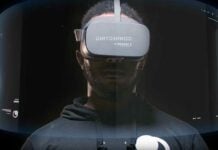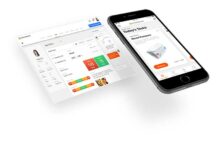Drinking water is keen for overall health. But why is that? Our body depends on water to survive once the amount of water in human body can vary from 50-75%. Every cell, tissue and organ in our body needs water for multiple purposes, such as: carrying oxygen and nutrients to cell, controlling body temperature, getting rid of waste and toxins, among many others. Hence, water percentage in our body is just as important as muscle and fat percentages to keep track of a good health. Do you know whether you have been drinking enough water lately? Be sure to check out the latest wearables that will help you monitor your level of hydration!
LVL is a wearable hydration monitor that gives you the complete picture of your health by also monitoring activity level and heart rate during exercises. Its technology makes use of infrared light that will measure water in your blood and will alert you on how much fluid you need to drink – these based off on current levels of sweat rates – in order to boost your workout performance. LVL has a simple and clear interface that will provide you with essential information at a glance. Moreover, the wearable is embedded with a OLED touch screen and side buttons for additional input. It can be connected via BLE to your smartphone, sports watch and any other for a truly real-time experience! LVL´s first shipment will take place this summer and you can already pre-order the product on their website.
Nix, by Nix Inc. (a Harvard Innovation Launch Lab), is currently developing a sweat-based biometric wearable sensor that is able to monitor hydration levels. Its sensor platform measures slight shifts in biomarkers present in body fluids, such as: sweat, tears, saliva, urine and others. Nix empowers athletes to keep track of their hydration status in real-time. Furthermore, it sends alerts how much fluids should be drunk and when. Nix´s patch-based sensor can be easily attached onto a patient´s body as a stand-alone sensor – which means: no phone, device or app needed for analyzing your hydration levels. Unfortunately release dates and prices have not been announced by Nix Inc. However, industry analysts project that the patches will cost each around $4 and $6.
John Rogers, Professor of the Northwestern University, paired up with Shirley Ryan AbilityLab, the Seattle Mariners, the US Airforce and Gatorade in order to bring a new wearable microfluidic sweat analytics device into the market. The soft and flexible device can measure sweat and sweat biomarkers, thus allowing users to better monitor their sweat rate and keep hydrated. The cool aspect about this new adhesive wearable is that it can measure users’ sweat during aquatic sports. Its material maintains water-tight seals to the skin that prevents surrounding water from entering the device’s channels. This could mean a drastic change on the way athletes monitor sweat rate and benchmark intensity and fatigue. Dr. Rogers expects that a version of this technology could be available in the market in 2019.
GoBe2, by Healbe, is a wearable device that automatically determine the calories you consume and burn – through your skin. By wearing it, the wearer will be enabled to check in real-time the amount of calories burned or consumed, activity level, rate of hydration, sleep patterns, stress levels, and others. The smartwatch uses Healbe FLOW™ Technology that combines a unique algorithm with measurements from the body manager’s pressure, accelerometer, and impedance sensors that shows the user their food intake without manual input (e.g. photos, food diaries, barcodes). The data collected can be saved by synchronizing GoBe2 with a mobile application and with the following health applications: Google Fit, Apple Health, Withings App and InKin.
You can buy it here! Price: €229,00
Dehydration is the leading cause infant illness and death in third world countries, and according to studies it can be more lethal than HIV, tuberculosis or malaria. AMBICA, by the Zurich University of Arts, is a prototype of a low-cost wearable medical device for monitoring dehydration in sick infants. It can keep track of hydration level over time and can be a key factor in reducing clinical workload in low resourced environments. The cuffs are made of a light EVA plastic – also used in orthopaedic applications – which increases the probability that this technology will be developed locally in the upcoming years. AMBICA´s accuracy and effectiveness are still being evaluated. Until then, their main aim is to create a not-for-profit organisation that supports local manufacture of these devices in order to distribute it to clinics in developing countries.
















